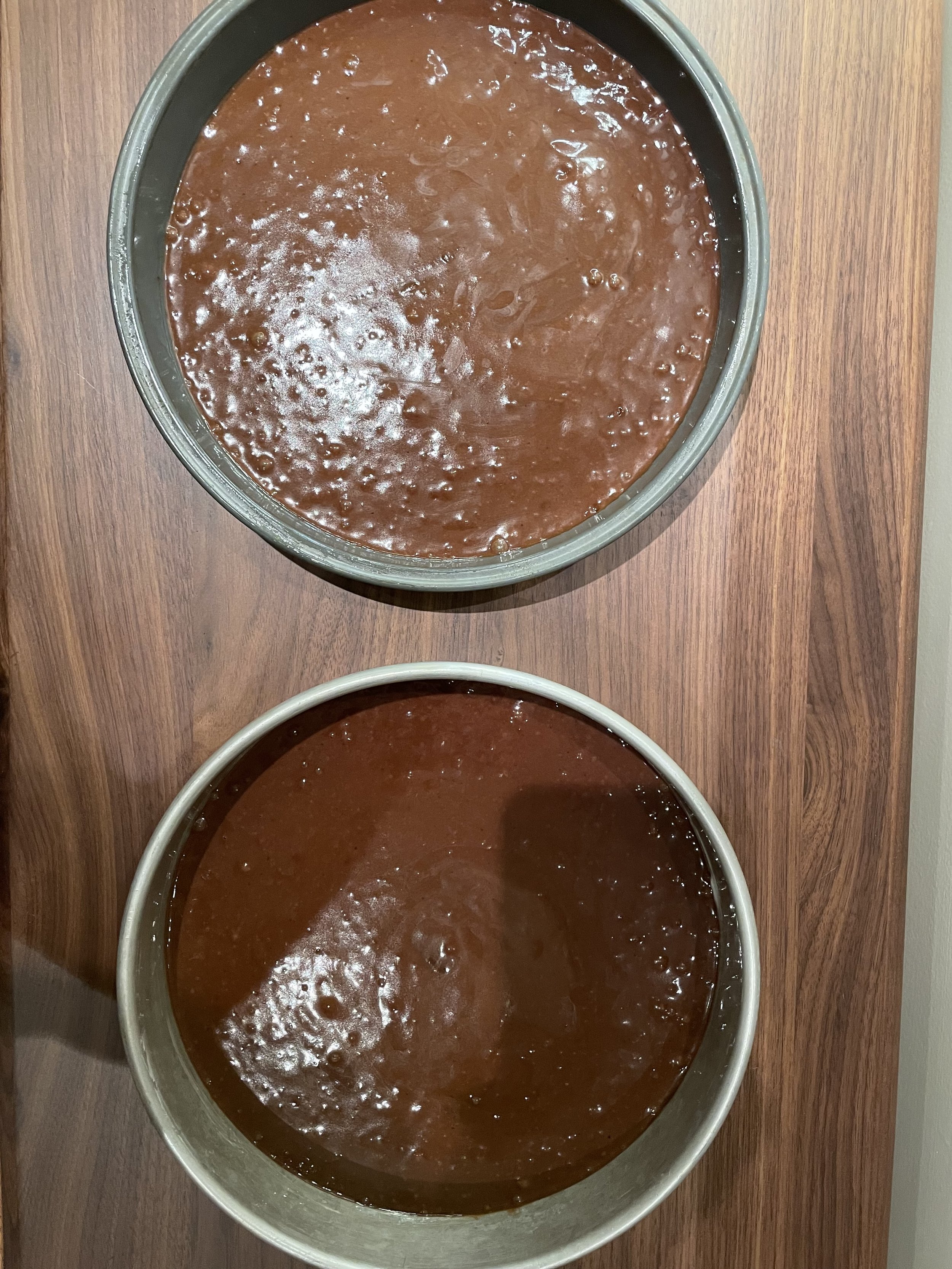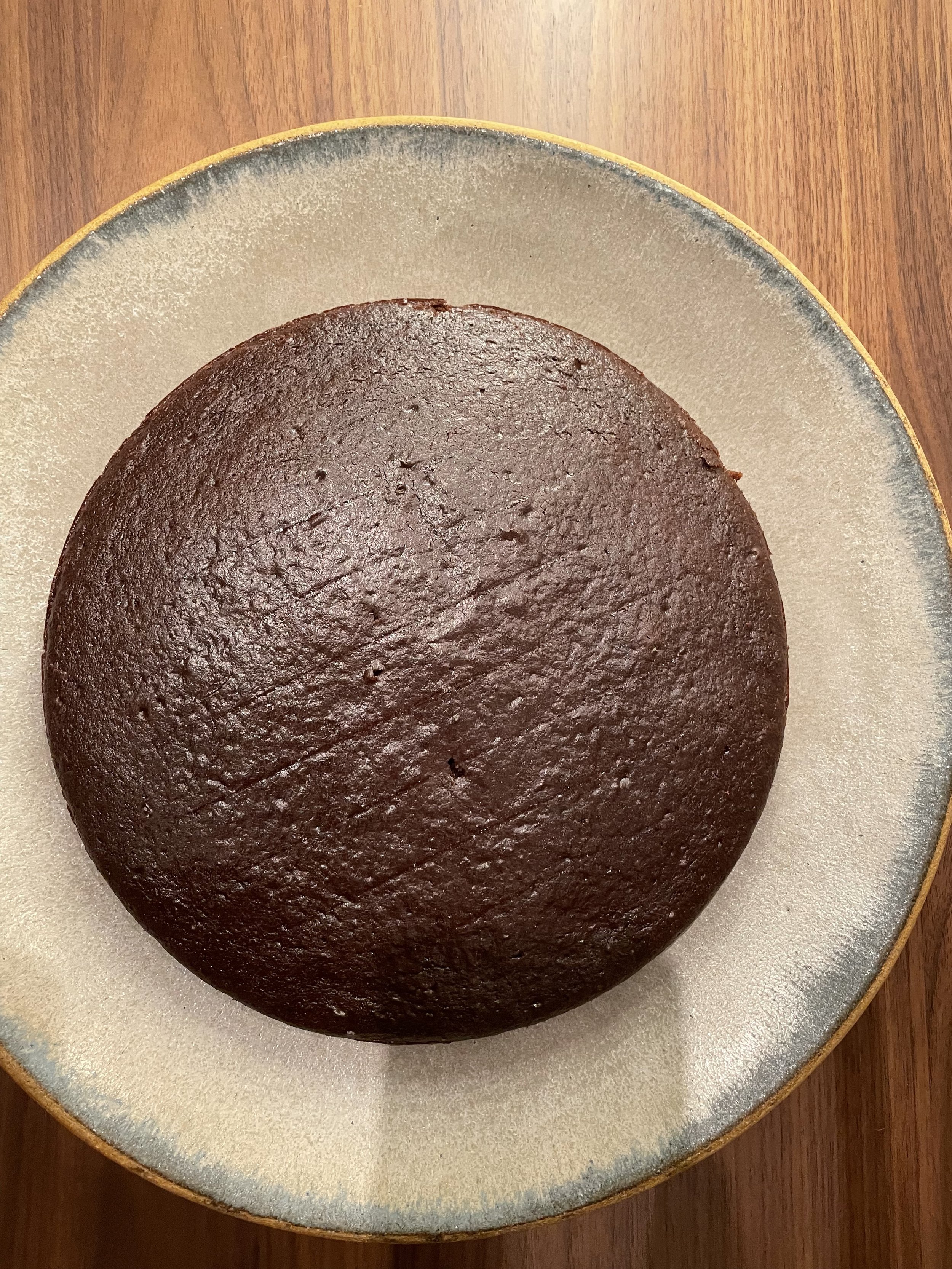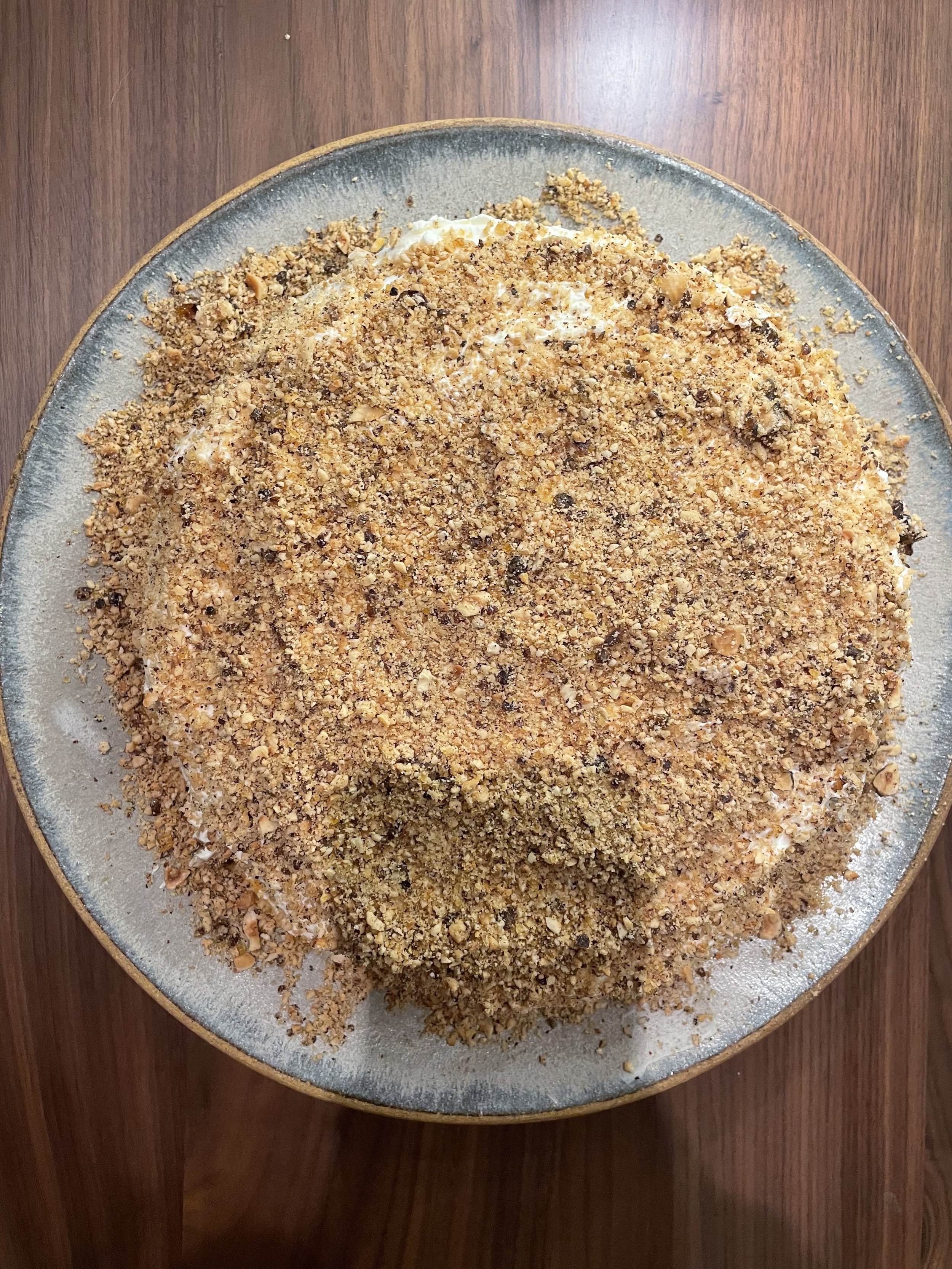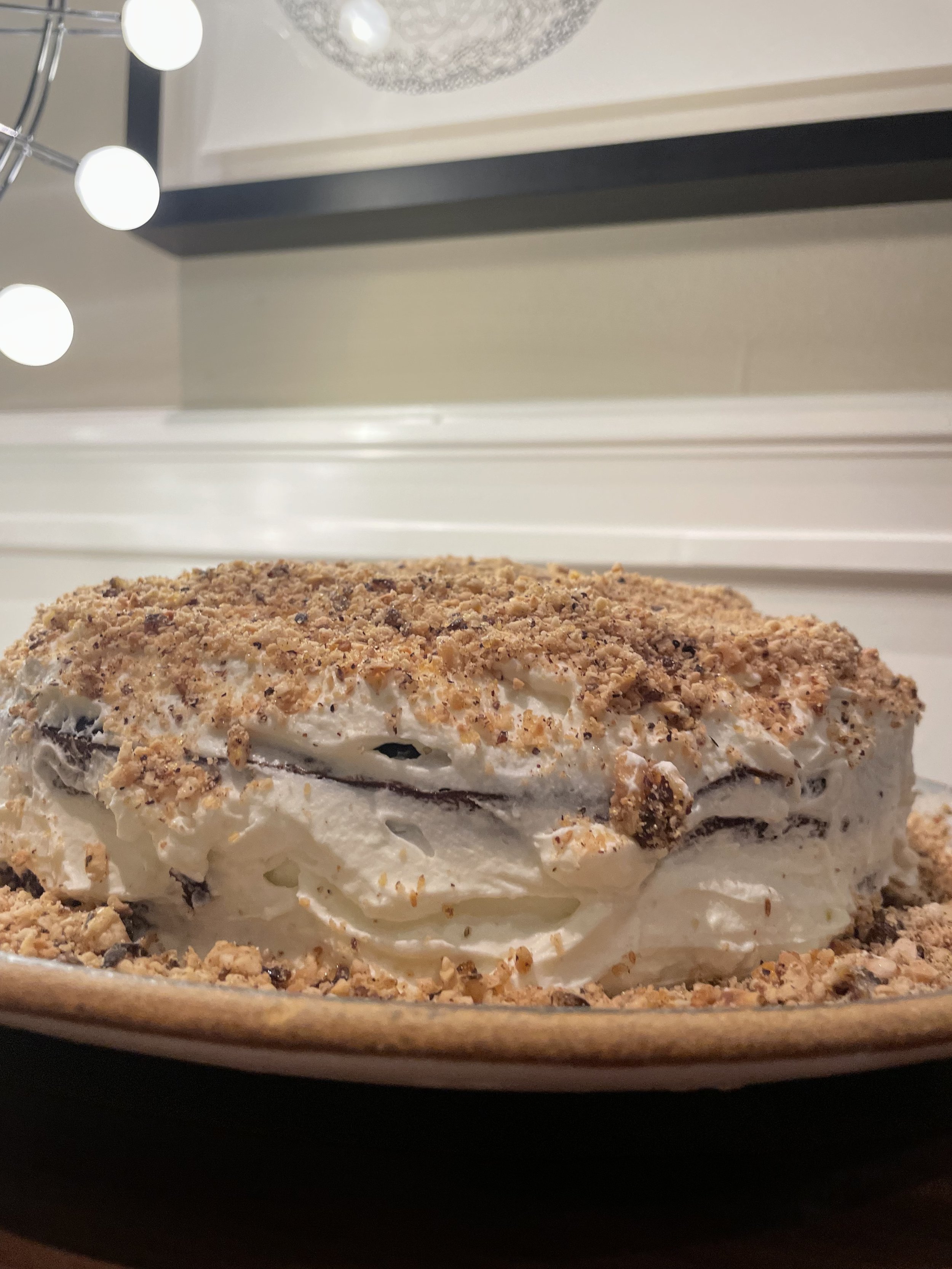Recipe Review: Yotam Ottolenghi’s Devil’s Food Cake with Hazelnut Praline Frosting
Author and Photographer: Sarah Ginsburg
Over break, I attempted restaurant owner and NYT food columnist Yotam Ottolenghi’s Devil’s Food Cake with Hazelnut Praline Topping. Growing up, my mom swore by Ottolenghi’s cookbooks, serving his vegetarian main courses and Mediterranean sides for typical weeknight dinners. When I saw this recipe among the NYT’s Most Popular Recipes of 2021, I knew I wanted to attempt it. In Ottolenghi’s words, most of his recipes have “a reason and a season,” so I was intrigued by his seemingly unconstrained choice of ingredients. It also felt perfectly fitting for the holiday season: sweet, celebratory, and indulgent. After all, I love cake, I love the holidays, and I love Ottolenghi. What could be better?
FOR THE CAKE:
5 ⅓ ounces/150 grams sunflower oil (by weight not by volume), plus more for greasing the pan
¾ cup/75 grams unsweetened Dutch-processed cocoa powder
1 ½ cups/192 grams all-purpose flour (plain flour)
1 teaspoon baking powder
1 teaspoon baking soda (bicarbonate of soda)
1 teaspoon salt
1 cup/200 grams superfine sugar (caster sugar) or granulated sugar
½ lightly packed cup/100 grams dark brown sugar
2 large eggs
½ cup plus 1 tablespoon/150 grams plain kefir (or buttermilk)
¾ cup plus 3 tablespoons/220 grams very hot coffee, plus 1 tablespoon/14 grams at room temperature, for brushing
FOR THE HAZELNUT PRALINE:
1 ½ cups/200 grams blanched hazelnuts
¾ cup plus 2 tablespoons/180 grams superfine sugar (caster sugar) or granulated sugar
¼ teaspoon salt
FOR THE MASCARPONE CREAM:
1 ¼ cups/300 grams cold heavy cream (double cream)
⅓ cup plus 1 tablespoon/95 grams mascarpone
2 tablespoons malted milk powder, such as Horlick’s
¼ cup plus 2 teaspoons/30 grams confectioners’ sugar (icing sugar)
Tiny pinch of salt
DIRECTIONS:
Cake:
Preheat your oven to 375 degrees Fahrenheit and line the bottom of two eight inch cake pans with parchment paper and grease the sides. Set your pans aside.
In a large bowl, whisk together your cocoa powder, baking powder, flour, salt, brown sugar, and white sugar. In a separate bowl, whisk together the oil, eggs, and buttermilk. Add your wet ingredients to your dry ingredients and use a spatula to gently fold through your mixture. Next, add your three-fourth cup plus three tablespoons of freshly brewed coffee and mix gently to combine. The mixture will look runny at first, but after mixing thoroughly, it will turn into a glossy batter.
Next, divide your batter into the two lined cake pans. Bake for thirty minutes, or until a toothpick inserted into the middle comes out clean. Turn both pans over to release the cakes, and lightly brush the tops with the remaining tablespoon of coffee. Set aside.
Praline:
With your oven still at 375 degrees Fahrenheit, spread your hazelnuts onto a parchment-lined baking sheet and bake for 15 minutes, making sure to shake the pan halfway through baking. Once they turn a deep golden brown, set aside.
Next, place a saucepan over medium heat, adding the caster sugar until it turns a light caramel color. Add your hazelnuts and ¼ teaspoon of salt, stirring completely to coat. Quickly transfer your mixture to a parchment-lined tray to cool.
Once your hazelnut and sugar mixture is room temperature, break apart and add it to a food processor. Pulse until you have coarse crumbs, and transfer half of the mixture to a bowl. The recipe calls for pulsing your remaining mixture for about five more minutes or until it turns into a nut butter consistency, but I chose to skip this step and leave the praline coarse.
Frosting:
Add your mascarpone, malted milk, heavy cream, confectioners’ sugar, and salt to a stand mixer and beat on high speed until you have stiff peaks (1-2 minutes). If you’re not assembling your cake right away, refrigerate your mixture. The cake is easiest to assemble with cold frosting.
Assembly:
When you’re ready to assemble your cake, place one of the cakes on your stand and top with about half of your frosting, spreading evenly across the top with a pastry knife. Sprinkle about 2 tablespoons of your praline over the cake. Carefully invert your other cake on top of the bottom layer, adding the remaining cream and praline. If you are left with extra frosting, spread it over the sides of the cake. Serve and enjoy!
Conclusion:
This cake was certainly a challenge, but it was well worth it. All three components - the cake, mascarpone cream, and hazelnut praline - were technically demanding and required a lot of ingredients, but even as an amateur baker, I had an easy time following the recipe. The cake itself was rich and moist; the deep chocolate base was perfectly complemented by subtle coffee undertones, and the tanginess of the buttermilk added a beautiful depth of flavor. For me, the mascarpone cream was the highlight of the cake. I typically shy away from frostings because I find them overpoweringly sweet and one-note, but the mascarpone was light and tart, and the malted milk added a unique nuttiness that paired well with the richness of the unsweetened cocoa. And lastly, the hazelnut praline made for the perfect nutty crunch. I would recommend leaving it in larger chunks and being generous with the application; this component truly took the cake to the next level. As an added bonus, I ended up with a full jar of excess praline, which I ate on top of vanilla ice cream the following day.
If I could do one thing differently in the future, I would make one and a half times the amount of frosting. The layer on my cake was slightly too thin, and since the frosting is so flavorful, it’s essential that it is unsparingly applied.
I could not recommend this cake highly enough. I have never made a desert with such an intentional, complex blend of flavors, and even as an inexperienced baker, I had few issues with the execution. Frankly, I don’t think I’ll ever need to eat another kind of cake again. Ottolenghi, I think you’ve done your job.







